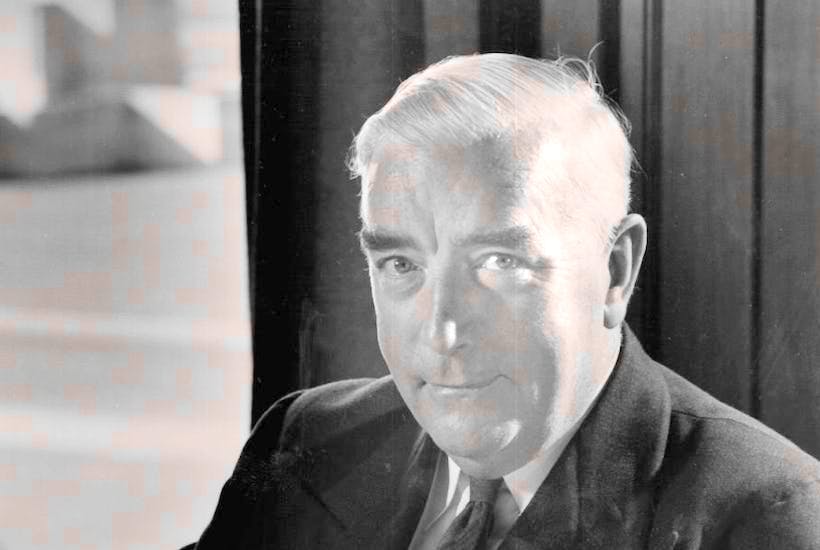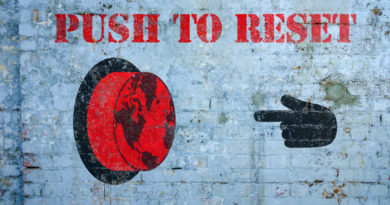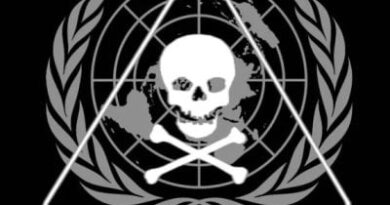The Liberal party needs its own ‘Great Reset’

We’ve likely all heard of “The Great Reset”, the World Economic Forum’s plan to lead a post-covid global society, and “build a new social contract”. The conspiracy theorists have been talking about it, and anyone who has seen the “you’ll own nothing, and you’ll be happy” promotional clip must surely get the creeps. But away from those heady Davos billionaire dreams, the one great reset that really needs to take place to #BuildBackBetter is that of the Liberal Party — both at a federal and state level.
Last weekend saw an almost complete wipe-out of the party in Western Australia, after the 34-year-old “Future PM” card–carrying Liberal leader used the interesting tactic of trying to out-green the Greens in a mining state and proclaim loudly that they would lose the election. His tactic worked, because he did indeed lose the election, and in spectacular form. This comes after a lacklustre election campaign last year in Queensland, and this week’s attempted leadership spill within the fractured Victorian Liberals.
The Victorian Liberals seem to have more factions than they do weekly media appearances and have barely landed a blow to Premier Daniel Andrews — even with all the ammunition that the handling/bungling of the Covid19 crisis has given them. Last week, a fun little poll on social media had the wet stairs that tripped up the Premier as a better opposition leader than Michael O’Brien by 98 to 2 per cent.
There have been various great resets within the “non-Labor” side of Government, most importantly the actual formation of the Liberal Party in 1944. Robert Menzies saw a need for a completely new political force to challenge the Labor party successfully, after a disaster for the United Australia Party in 1943. He deliberately chose the name to reflect a new progressive party that was “willing to make experiments, in no sense reactionary”, he became its first leader, and “Menzies’ Child” was born. Few would see familial similarities with that child’s modern offspring.
I am reminded of that original vision, resulting in Australia’s longest-serving prime minister, as I read through a little chronicle on Sir Robert, which is part of the new Australian Biographical Mongraphs, edited by Scott Prasser for Connor Court Publishing. Dr Prasser says that they are launching these new monographs because of the failure of schools and universities to teach politics correctly. State politics is barely covered even in most media degrees, and the university system is geared towards publication in International journals, with no real focus on Australia. Is it any wonder that even many elected Liberal Party members barely know and celebrate their own party’s history?
Australia’s second longest serving Prime Minister, John Howard, recently commemorated 25 years since his incredible 1996 victory. ‘Mr 18 Percent’ appealed to the battlers, much like Menzies with his forgotten people, and led the Liberals into one of the biggest landslide elections in Australian history and an accompanying economic boom. These days it seems hard to imagine that a prime minister can even see out one whole term, let alone several.
One of Howard’s former cabinet ministers, John Anderson, has recently announced his desire for a political comeback, after more than a decade spent back on his farm and producing some quality podcasts with notable guests. He says he plans on tackling identity politics and to bring a return to civil political discussion. Is this comeback part of a movement to return the party to more classical liberal roots? One can only hope.
Howard spoke of the Liberals as a broad church – but in a church at least all the congregation gathered believe in the same God. There are some in the church who seem to have abandoned their faith altogether and are instead worshipping at the altar of a new green God. The new and revised hymnbook shows that some of the preachers should not even be there – I mean how long will NSW Premier Gladys Berejiklian put up with her Environment Minister Matt Kean? Surely he is angling for an invite to the Davos Climate Change Conference, and how would anyone know that he and pro coal Queensland Senator Matt Canavan read from the same Coalition hymnbook? Pragmatism always has a place in party politics, but it is only useful when both sides have the same desired outcome, and it should never subjugate principle. Even worse, it should never be a term used to dismiss and undermine Liberal tradition.
The average voter barely reads past the headlines, so the political party that stands apart and adheres to its principles can do well. With the two majors, it can be easier because many will still vote for their red or blue team regardless of what is promised.
On polling day for the recent Queensland State election, I helped a friend running as an Independent in the lovely riverside suburb of Hamilton, a safe LNP seat. Throughout the course of this hot Brisbane day, and after shared sandwiches and jokes at the Greens Party expense, I became firm friends with the LNP volunteers. Unfortunately, their only sales pitch was that their (now former) LNP leader, Deb Frecklington “was not Annastacia”. That was it. Point of difference? I’m not too sure, as Frecklington didn’t seem to offer up much resistance to the Palaszczuk Government’s border closures in response to covid, and the parochial fear-mongering which went so far as her saying “in Queensland, we have Queensland hospitals for our people”, and denying northern NSW residents their regular treatments in Brisbane. One young mother from Casino, in Northern NSW, was even refused entry to visit her newborn in Brisbane. A multitude of horrific stories did not shake the Queensland voters from their commitment to the Labor party, as they just did not see a viable alternative. Palaszczuk’s platform offered fear and doubled down on Covid 19 paranoia. The LNP team should have offered a positive vision of hope, community-oriented solutions, and proactive plans for the future. A fate likely to occur in Victoria in November 2022, unless the State Liberals can get on with their much-needed reset.
Menzies had the great ability to keep everyone inside the tent and was able to deal with all the different issues and personalities, even the infamous leaker that was Billy McMahon. Scott Morrison, on the other hand, seems to react to the media and is therefore always chasing his tail. After a media outcry over four Cartier watches, Morrison threatened to remove Australia Post Chief Executive Christine Holgate if she did not stand down. He failed to effectively handle MP Craig Kelly, after his ban from social media platforms and a staged run–in with Labor frontbencher Tanya Plibersek. Now Kelly has left the party, and the Morrison Government is reduced to 76 seats in a 151-seat House of Representatives. The social media outrage mob strikes, claims another scalp, and the party formed to be anti-reactionary just reacts yet again.
Morrison’s reactions to the Christian Porter historical rape allegation, the alleged sexual assault of staffer Brittany Higgins in a cabinet minister’s office, and indeed the nationwide “March 4 Justice” rallies shows the federal leader continuing to chase his tail, and reacting often quite poorly to the outrage mobs.
If we are seeing modern-day Liberal ginger groups across the party, they seem to be heading in the opposite direction to their members and voters. A great reset for the Liberals should be no conspiracy theory if they are ever to remain a political force in Australia and win back their base.
*** This article has been archived for your research. The original version from The Spectator Australia can be found here ***


